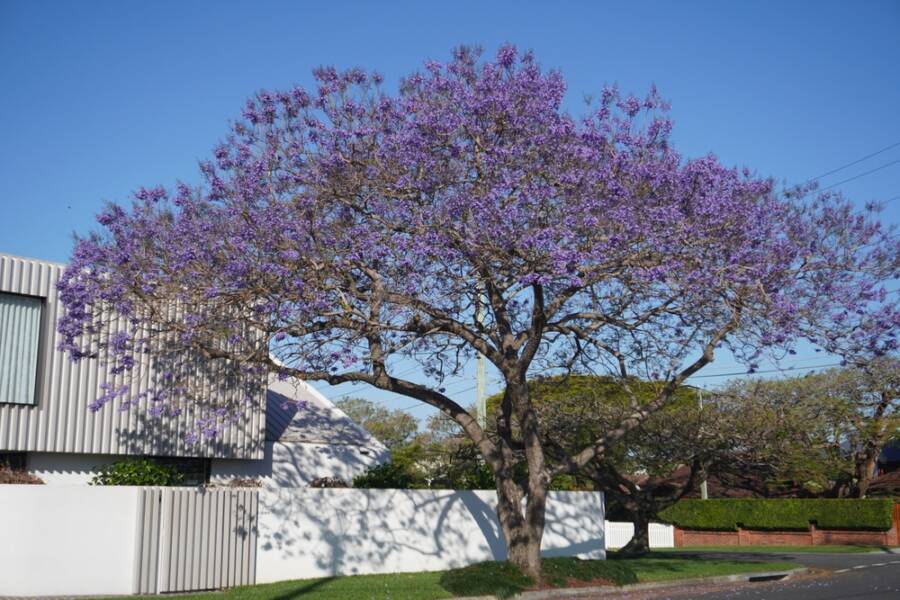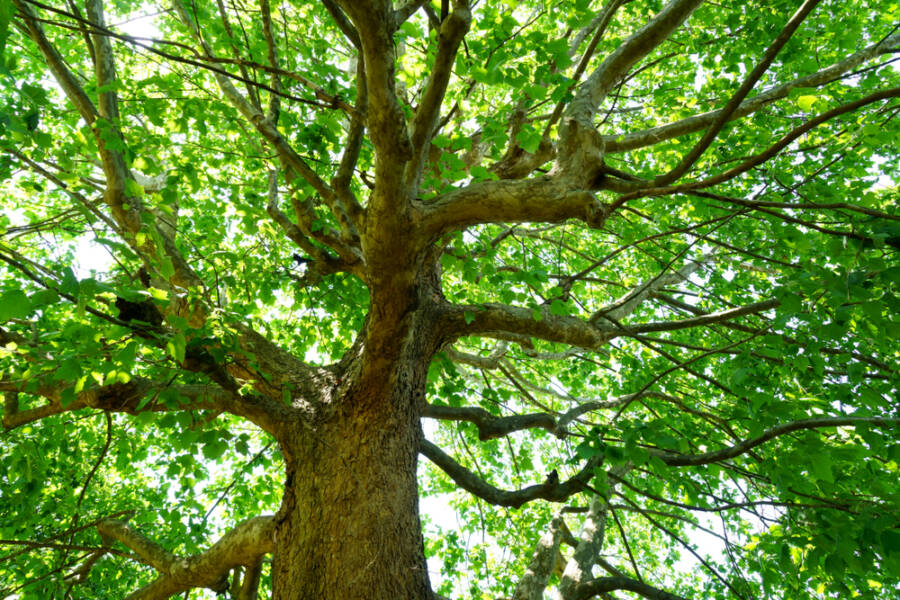Steer clear of these trees with invasive roots because they can damage your garden!
Trees are nice; they offer us shade and fresh air and are very important to the ecosystem. However, some trees with invasive roots may damage your garden pretty badly. It is commonly recognized that tree roots may break down and clog residential sewage systems.
Because that’s what your sewer pipes are made of—water and nutrients and we can’t blame them because they are physiologically programmed to seek them out. If you have this issue in your landscape, pipe relining is the most effective technique to fix a tree-root-clogged drain without digging up the ground.
It’s better to avoid planting trees with invasive roots to avoid plumbing issues. Let’s find out what type of trees these might be…

Jacaranda
Yes, it looks amazing; we can’t deny this fact. Even its flowers when they bloom resemble a pleasant grape smell. However, it is among the trees with invasive roots that you should stay away from planting near or in your garden. They have several roots that are visible above the dirt.
Besides the fact that you can easily step on its roots since they can reach up to 59 feet wide, and because of that, it shouldn’t be placed near pipes or in areas where there is a lot of foot activity. I don’t advise you to plant a Jacaranda tree; however, if you still want to, make sure you read all the planting regulations for your area.
Silver maple
Originally from North America, the Silver Maple is named for its distinctive silver underside on its palmately lobed leaves, which are found only in this area. This tree grows quickly, and its extensive root system will damage your yard. This tree may reach a height of 82 feet at maturity and a canopy width of 49 feet, which is quite a lot, especially for a tiny area.
Considering adding more vegetation to the vicinity surrounding it? Oh, don’t bother. Any other plant will struggle to thrive at the base of the silver maple because it is so “possessive” of its place.
Southern magnolia
Magnolias are amazing, and during their peak, everyone stops and takes pictures of or near them. Unfortunately, magnolias are among the trees with invasive roots, which isn’t a great idea to plant in an average-sized garden.
Since leaf drop occurs all year long, adding a magnolia greatly increases the untidy factor in the yard. As with the silver maple, no other plant can grow next to it due to the compacted undersoil area that its roots occupy and the thick magnolia leaf cover.
Sweet gum
Although the beautiful fall color of sweet gum is well-known and admired, its seeds are disliked. You should avoid going barefoot in your yard if you have sweet gum once the seedpods fall in the fall and winter. If you are stuck with one of the pods, you will be able to shout because of their sharp, prickly exteriors. Ouch!
Across the grass, their surface roots may also cause problems; however, compared to other trees on the list, their roots aren’t that long and thick, so they might be safe around pipes.
Golden Robinia
The Golden Robinia tree grows quickly and has lovely, ornamental foliage. In the fall, the once-lime green leaves turn a vivid, deep gold. Because of their reduced height and tolerance to pollution, they make effective shade trees and are frequently planted on roadways and near power lines.
Its roots reach up to 55 feet, and although they would not pose a threat to the pipelines, they should be avoided near homes and foundations due to their rapid and ferocious growth.

American Sycamore
Sycamores are known for their messy nature. Every year, the area surrounding the sycamore will be covered with a massive leaf and bark drop along with big, long-hanging, and often dropping seedpods. The imposing sycamore will do its best to work against you if you’re trying to maintain a neat yard since it will produce mountains of leaves that will clog your driveway, gutters, and yard.
They have vigorous roots and grow to great heights very rapidly. This tree in particular is prone to ice damage because it has weak limbs and pretty fragile twigs. Since it will need plenty of space to grow tall and healthy, I’d recommend choosing a spot that is at least 30 feet away from any other trees or structures. In most cases, people who still want to grow an American Sycamore usually live in the countryside and have a large land.
Bradford pear
Back in the day, when I lived in my parent’s home, my mom used to have a couple of less favorite trees to grow. And now, it came to my mind one thing she used to say about the Bradford tree: “If someone would have a Bradford pear in their yard, the perfect day to cut it down would have been yesterday.” I know, it’s a bad joke yet it’s funny!
If it’s not properly situated, it can cause multiple headaches for garden owners, especially due to its invasive roots that can pose threats around driveways and sidewalks. Since this tree can also grow pretty tall, its roots can become robust and reach around 50 feet wide.
Pine
Having a huge and iconic Christmas tree right in your front yard might turn some heads, that’s for sure. But is it worth growing it in the long run? Definitely not. Pine trees, of which there are over 250 kinds, are frequently tall (around 30 feet), woody, and have leaves that resemble needles. The root system of pine trees is incredible yet rather invasive.
The tree mostly depends on its root system to support it in the wind because it may get rather tall. The tap root system of pine trees allows them to connect with neighboring trees and maintain their structural integrity.
Despite being aggressive and included in the list of invasive species, tap roots often develop downward, making them less problematic than other trees of the same size, such as eucalyptus trees.
Need a set of gardening tools at a decent price that will last quite a while? I bought myself this one from Amazon for $37.99. The set comprises nine heavy-duty, anti-rust pieces that are easy to handle, even for novice gardeners. Trust me when I say you won’t regret buying it.
Bottom line:
Reading these lines about all these trees with invasive roots discouraged you from having any trees in your garden? Please don’t! If you still want to grow one or more trees in your garden without being harmful to your property or other plants around it, you can go for apple trees, olive trees, or bay trees.
These three are super easy to take care of; all you need to do is pay attention to how often they require water and, of course, what climate would be best for them. Apple trees, for example, are the most versatile ones, thriving in temperate climate conditions.
…psst! Check out 10 Small Trees That Will Make Your Landscape More Beautiful and which are totally safe to plant in your garden without minding about invasive roots.









